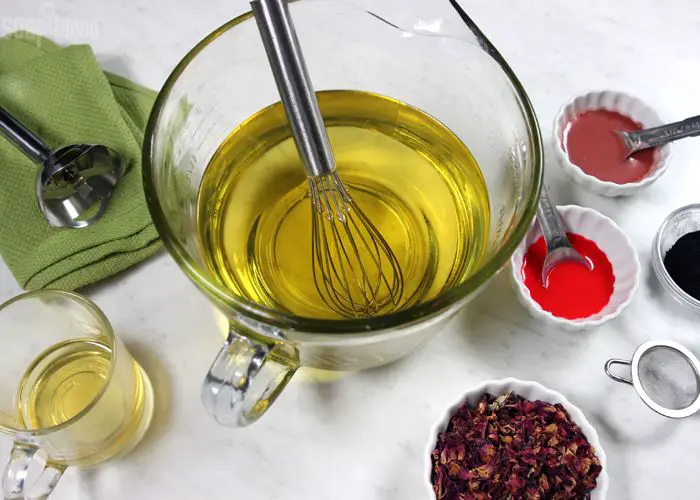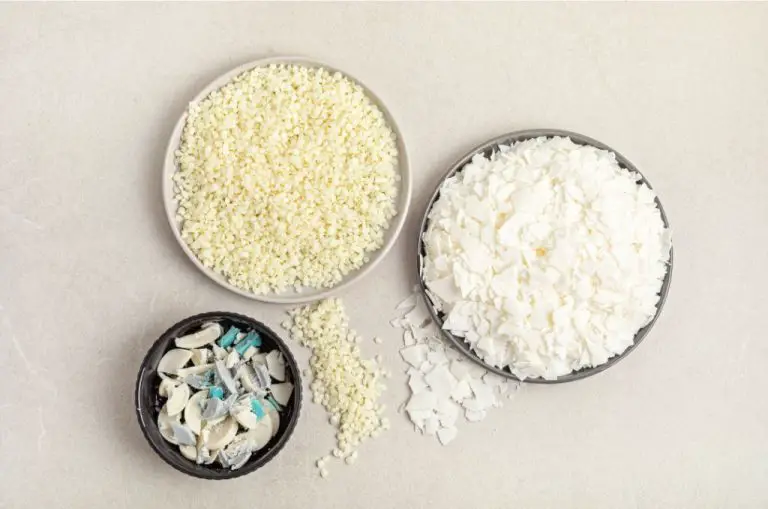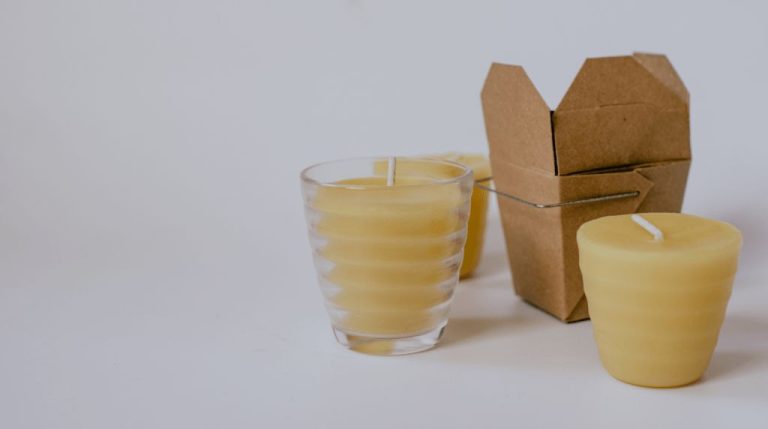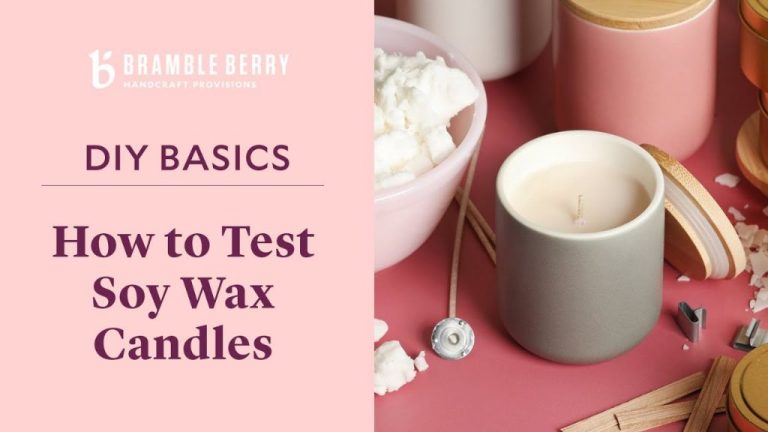What Wicks Work Best With Coconut Wax?
Coconut wax is made from the oils of coconut palm trees. It has become a popular candle wax due to its many beneficial properties compared to paraffin wax. Coconut wax is all-natural, burns cleaner and brighter, and is free of harmful chemicals. It also has a high melting point and holds scent well.
Some key benefits of coconut wax include:
- Burns cleaner – Produces almost no soot or smoke
- Environmentally friendly – Made from a renewable resource
- Holds fragrance – Scents last longer in coconut wax
- Hard finish – Candles have a smooth, hard surface
- High melting point – Stays solid at higher temperatures
- Natural material – Free of paraffin, synthetics, and dyes
When making candles with coconut wax, the right wick is important to get the best burn performance. This article will examine which wicks work optimally with this natural wax.
Common Wick Materials
There are several common materials used for wicks when candlemaking with coconut wax:
Cotton
Cotton is one of the most popular wick materials. It’s affordable and burns evenly. However, cotton wicks can create more soot than some other materials.
Wood
Wooden wicks are made from natural wood fibers. They are stiff and hardy. Wood wicks make a crackling sound when lit, which some find pleasing. But they can be prone to burning unevenly.
Paper
Paper wicks are thin and made of tightly rolled paper. They tend to be inexpensive but may burn fast. Paper wicks work best in small candles.
Zinc Core
Wicks with zinc cores help stabilize the flame. The zinc prevents the wick from bending over into the wax pool. Zinc core wicks work well for coconut wax, reducing mushrooming.
Wick Sizing
Properly sizing the wick is crucial for optimal candle performance. The wick diameter should be matched to the diameter of the candle container to allow the wax to melt evenly and the fragrance to disperse properly.
Wick sizing is determined by measuring the diameter of the wick in ply or the thread width. Typical wick sizes range from 4 ply to 30 ply for small to large candles. As a general rule, smaller candles and containers require smaller wicks, while larger candles need wider wicks.
According to the Candle Wick Sizing Chart, some guidelines include:
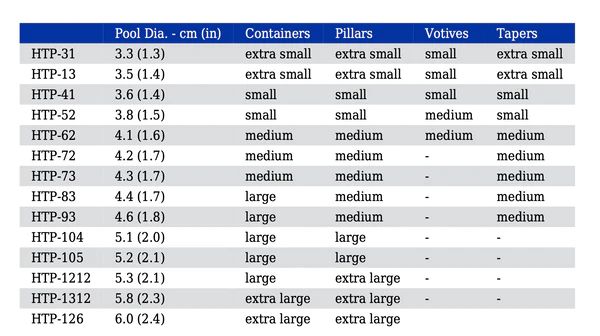
- 4-6 ply wicks for small votive or tea light candles
- 10-12 ply wicks for 3-4 inch pillar candles
- 12-18 ply wicks for a standard 8 oz. container candle
- 18-22 ply wicks for a 16 oz. to 24 oz. large jar candle
Testing different wick sizes to find the optimal width for each candle design is recommended. The flame should be steady and not smoke or flare up too high to properly melt the wax and fill the container with fragrance.
Cotton Wicks
Cotton is one of the most commonly used wick materials for coconut wax candles. Cotton wicks are inexpensive, widely available, and can be trimmed to adjust the size of the flame. They’re made of natural fibers that curl into the wax pool as the candle burns. This allows the wick to absorb melted wax and fuel the flame. Cotton wicks give a nice, bright flame and can be used in containers or pillars.
Since cotton is a natural material, these wicks may need occasional trimming with scissors to remove any black soot deposit (“mushrooming”) at the tip. It’s recommended to trim wicks to 1⁄4” before each use to maintain the best burn. Over time, failure to trim may cause the wick to bend over into the wax pool rather than standing upright. Properly trimmed cotton wicks will provide a strong and steady flame.
Wooden Wicks
Wooden wicks are a natural wick material made from wood fibers, often bamboo. They work well with coconut wax because of their adjustable flame height and audible crackling sound when burning. As the Bark & Burn Candle Co FAQ explains, “Wood wicks are an excellent choice for coconut wax candles because they complement the natural and eco-friendly properties of the wax.” The wooden material provides a clean burn and pleasant aroma.
The audible crackling sound produced by wood wicks helps indicate the candle is lit and burning properly. Wooden wicks can also be trimmed to adjust flame height, making them versatile for different jar styles and wax blends. As one Reddit user pointed out when discussing wood wicks with coconut wax, both materials burn hot so properly sizing the wick is important to prevent the candle container from overheating.
Zinc Core Wicks
One of the most popular wick options for coconut wax is the zinc core wick. As the name suggests, these wicks have a zinc metal core at the center that is tightly wrapped with cotton fibers. The zinc core provides several benefits when burning coconut wax candles:
- Stabilizes the flame – The conductive metal core helps anchor the flame in place, preventing excess flickering.
- Reduces mushrooming – The rigid core minimizes the tip of the wick from mushrooming or bending over as it burns.
- Long burn time – The core allows the wick to burn down slowly and evenly, maximizing candle burn time.
The zinc itself does not burn but helps regulate the temperature. This makes zinc core wicks an excellent choice for coconut wax, as they can withstand the high melt point and prevent clogging. Look for zinc core wicks specifically intended for use with coconut wax to take advantage of these benefits.
Pre-Tabbed Wicks
Pre-tabbed wicks are a good option for coconut wax candles. The tabs help anchor the wick in place which reduces mushrooming (when wax piles up around the wick). Pre-tabbing also makes wicks easier to center in the candle vessel during the pouring process.
The tabs on pre-tabbed wicks are normally made of zinc. Zinc has a high melt point which allows the tabs to withstand the high temperatures of melted wax. As the wax cools and hardens, the zinc tabs become firmly embedded in the wax to hold the wick upright.
Pre-tabbed wicks come in different tab configurations to suit different candle vessel types. Double-tabbed wicks work well for containers and jars while more tabs can be useful for pillar candles. When choosing pre-tabbed wicks, make sure to select the proper sizing based on the diameter of the candle container.
Overall, pre-tabbed wicks are a reliable choice for coconut wax candles. The tabs provide extra stability to center the wick and prevent issues like mushrooming. Just be sure to pair the proper wick size and tab configuration with your specific candle vessel.
Wick Comparison
When choosing a wick for coconut wax candles, each type has its own pros and cons:
Cotton Wicks:
Pros:
- Inexpensive
- Readily available
- Absorbent
Cons:
- May bend or mushroom when the flame gets too high
- Prone to soot buildup
Wooden Wicks:
Pros:
- Make a pleasant crackling sound
- Stand upright and resist mushrooming
- Natural material
Cons:
- More expensive than cotton
- May pop and throw sparks
- Require trimming to control flame height
Zinc Core Wicks:
Pros:
- Support taller flame height
- Resist bending and mushrooming
- Minimal soot buildup
Cons:
- More expensive
- Conduct heat down into wax pool
- May need to trim wick height
Pre-Tabbed Wicks:
Pros:
- Tabs anchor wick while pouring wax
- Easy to center in containers
- Reduce risk of wicks moving off-center
Cons:
- Limited sizing options
- Tabs use up some wax
- Still require wick straightening
Best Practices
When working with coconut wax, following best practices for wick sizing and placement is key for optimal performance. Some key factors to consider include:
Proper wick length – Make sure your wick is trimmed to 1⁄4” length to allow for full melt pool. Too short and the wax may not pool properly. Too long can lead to sooting. Most experts recommend sticking to manufacturer guidelines.
Container size – Wicks need to be sized appropriately to the diameter of the container to allow for proper melt pool. A bigger container requires a larger wick.
Wax pooling – Coconut wax requires a full melt pool to properly release scent. Make sure your wick is large enough for the wax to fully liquefy out to the edges as it burns.
Testing wick sizes with sample candles until you achieve the right melt pool for your particular wax, fragrance load, and container is recommended.
Conclusion
When using coconut wax, the wick is crucial for achieving optimal performance. Based on the pros and cons of each wick type, cotton core wicks seem to be the best all-around performer. They provide a strong and steady flame without clogging, allow full melt pool coverage, and come in a wide variety of sizes. Wooden wicks also pair well with coconut wax, as they help anchor the wax and provide a signature crackling sound. However, wooden wicks may require more maintenance and trimming.
Pre-tabbed and zinc core wicks can also work, but may not be the best fit for all coconut wax candles. Ultimately, testing different wick types and sizes to find the right balance for your specific coconut wax blend is recommended. Wicks that are too small can lead to tunneling, while wicks that are too large can cause sooting. With some experimentation, you’ll find your perfect wick to maximize burn time, fragrance throw, and safety.

